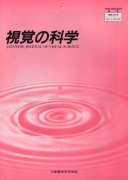Volume 42, Issue 1
Displaying 1-6 of 6 articles from this issue
- |<
- <
- 1
- >
- >|
Review Articles
-
Article type: REVIEW ARTICLES
2021 Volume 42 Issue 1 Pages 1-6
Published: 2021
Released on J-STAGE: March 30, 2021
Download PDF (3081K) Full view HTML
Original Articles
-
Article type: ORIGINAL ARTICLES
2021 Volume 42 Issue 1 Pages 7-12
Published: 2021
Released on J-STAGE: March 30, 2021
Download PDF (2013K) Full view HTML
Interview
-
Article type: Interview
2021 Volume 42 Issue 1 Pages 13-15
Published: 2021
Released on J-STAGE: March 30, 2021
Download PDF (748K) Full view HTML
Topics
-
Article type: Topics
2021 Volume 42 Issue 1 Pages 16-18
Published: 2021
Released on J-STAGE: March 30, 2021
Download PDF (2763K) Full view HTML
Book & Paper Review
-
Article type: Book & Paper Review
2021 Volume 42 Issue 1 Pages 19-20
Published: 2021
Released on J-STAGE: March 30, 2021
Download PDF (254K) Full view HTML
Impression of Meetings
-
Article type: Impression of Meetings
2021 Volume 42 Issue 1 Pages 21-22
Published: 2021
Released on J-STAGE: March 30, 2021
Download PDF (550K) Full view HTML
- |<
- <
- 1
- >
- >|
